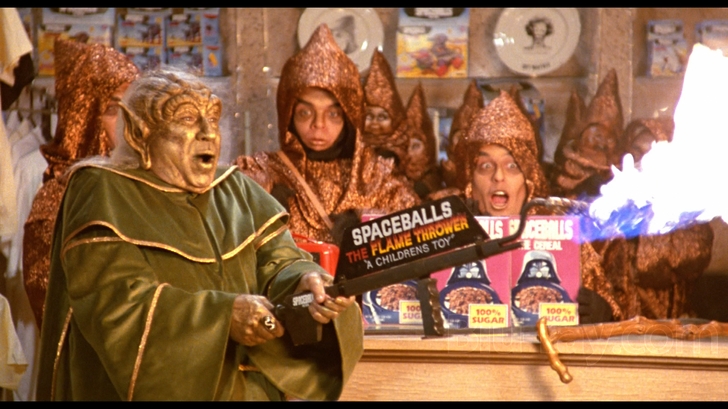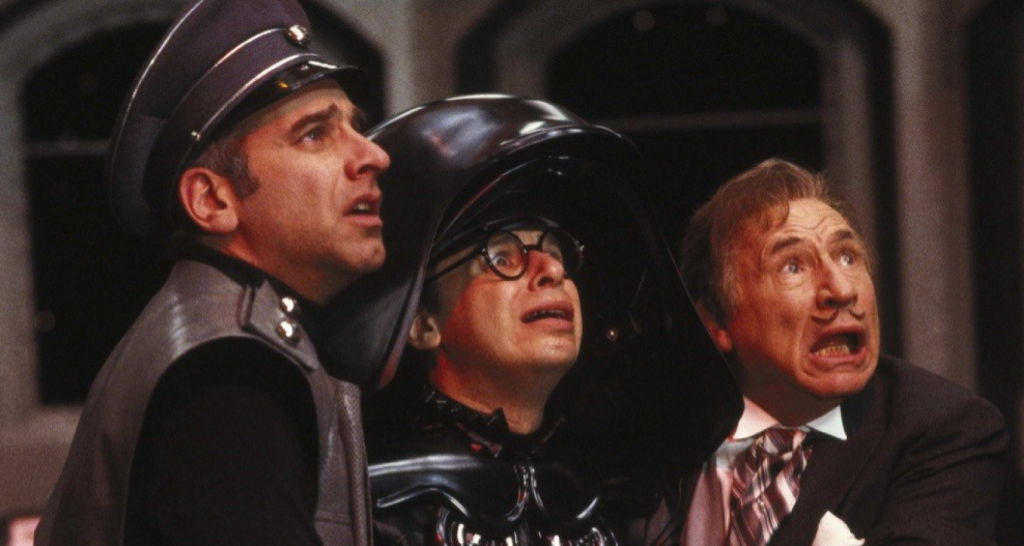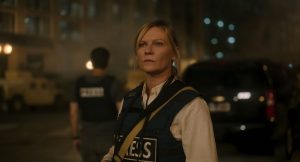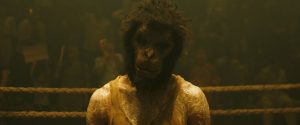Reviews include Irena’s Vow, The Beast, and Before I Change My Mind.
May The Schwartz Be With You: When Parody Outstrips Its Source
November 27, 2014
TIFF’s latest retrospective pays tribute to Mel Brooks, the “madcap maestro of silver-screen spoofery.” Adam Nayman writes on Spaceballs and how in comparison, Star Wars was essentially kids’ stuff
In an essay published in Glenn Kenny’s 2002 collection A Galaxy Not So Far Away, Jonathan Lethem reveals that he saw Star Wars twenty-one timesin the summer of 1977 and stopped at the number only because the number “seemed safely ridiculous and extreme.” I shan’t speculate on how many times Lethem has seen Star Wars since then, but I’m still pretty sure that I watched Spaceballs (1987)at least 21 times in the first summer after my parents purchased a copy for me on VHS—at least once a day in between a regimen of (literally and figuratively) healthier outdoor activities. Much like the vagrant book memorizers who consume and regurgitate the Western canon at the end of Fahrenheit 451—one of the only science-fiction classics not spoofed in Mel Brooks’ film—I could recite Spaceballs from beginning to end. I was nine years old, and it was the funniest movie I’d ever seen.

In her recent overview of Brooks’ oeuvre for The Globe and Mail—published on the occasion of the octogenarian writer-director getting a selective retrospective at the TIFF Bell Lightbox—Nathalie Atkinson doesn’t even mention Spaceballs, consigning it in its absence to the dustbin of the director’s lesser later work, alongside Robin Hood: Men in Tights (1991) and Dracula: Dead and Loving It (1995). It’s positioned as being a far cry from The Producers (1968) or Young Frankenstein (1974), movies that for a time turned the former television scribe into the most popular and bankable comedian—a writer-director-producer-star—in American cinema.
In the early 1970s, there was a real debate about which shrimpy Jewish auteurburned brighter: Mel Brooks or Woody Allen. And while the choice superficially appeared to be between energetically warmed over borscht-belt shtick and brainy New Yorker-grade satire, the fact is that Blazing Saddles (1974) and Young Frankenstein appropriated and demolished classical filmmaking forms at least as adroitly as Play It Again, Sam (1972) or Sleeper (1973). Both Brooks and Allen were parodists who more or less played themselves onscreen so as to never the let the audience forget the source of the mockery, but in Annie Hall (1977), Allen found a way to make his hybrid brand of self-centeredness and self-deprecation signify something greater. He won a handful of Oscars and became an avatar of grown-up moviemaking, while Brooks receded into the background—he simply wasn’t capable of the same kind of artistic transubstantiation.
One major difference is that where Allen has always evinced contempt for popular culture—or pop culture produced after, say, Cole Porter—Brooks is an entertainment omnivore: he chews it up and spits it out, and doesn’t worry so much about matters of taste. High Anxiety (1977) was his extended tribute to Alfred Hitchcock, but he didn’t wring much humor out of the Master’s films because, unusually, he seemed too reverent: the film wasn’t even as funny as Brian De Palma’s (ostensibly) non-comedic Hitchock riffs The Fury (1978) or Dressed to Kill (1981). The film’s title was appropriate, because what Brooks was sweating, right alongside his Cary Grant-esque character, was an anxiety of influence. But he had no such problems a decade later with Spaceballs.
The legacy of Star Wars (1977) was that it made kids like Jonathan Lethem want to watch it 21 times, and that appeal was bound up in its underlying dialectic of familiarity and novelty. Pauline Kael carped that Star Wars was the only movie “where the surprises [were] reassuring the first time around,” and she was right: what George Lucas had done was subsume fifty years’ worth of clichés into a narrative so lean and archetypal that it convinced psychologists and anthropologists that it had something to do with Joseph Campbell. The material was retrograde to the core, but the special effects were shiny and state of the art, and that basic formula—the same old thing in a slick new package—made Star Wars into an unprecedented hit. It also made it a Death Star-sized target for an X-wing of spoofery, and unlike in High Anxiety, Brooks felt no need to tread lightly.
In Spaceballs’ two greatest scenes, Brooks (and his co-writers (Thomas Meehan and Ronnie Graham) skewers the obsession with ancillary revenues underwriting Lucas’ entire empire. In one, the titular bad guys led by Darth Helmet (Rick Moranis) and President Skroob (Brooks) scheme a way to find the vanished good guys by fast-forwarding through a VHS cassette of the movie they’re presently starring in—a wry and perfectly executed visual joke acknowledging the increasing industrial importance of post-theatrical release windows. (There’s also a close-up of the Spaceballs’ video library, featuring all of Brooks’ previous films in handsome clamshell cases.) Later, when Luke Skywalker manqué Lone Star (Bill Pullman) and his band of cut-rate Star Wars knockoff pals (including the late John Candy as a Chewbacca clone called Barf) stumble across the lair of the great wizard Yogurt (Brooks as a vaudevillian Yoda figure), he opens a secret door to reveal a room full of Spaceballs products—e.g. Spaceballs: The Flame Thrower. “Merchandising!” Yogurt yells with the forceful authority of a Jedi Master. “Where the real money from the movie is made!” The real punchline, though, was that Brooks’ agreement with Lucasfilm dictated that no Spaceballs action figures were to be made, lest they create market competition.

There was no such friction, onscreen or behind the scenes, in Blazing Saddles and Young Frankenstein, which were first and foremost formal parodies: elegantly wrought goofs on old Hollywood genres. In contrast, Spaceballs has plenty of sight gags building on the visual language of the Star Wars films, like the great opening shot of a looming spaceship so big it makes the Imperial Destroyer look like a dinghy (it takes almost thirty seconds to entirely cross the screen). And yet the tone is slightly different than in its predecessors. Instead of tipping his jester’s cap to the old movies he grew up with, Brooks is inveighing against the multiplex fare that’s bedazzled his own children, and he seems determined to expose its essentially old-fashioned nature instead of acknowledging it as some great leap forward. He doesn’t stop at Star Wars, either: when John Hurt shows up and reprises his role from Alien (1979)—probably because Brooks had helped to cast the actor in The Elephant Man (1980), which was produced under the Brooksfilm imprimatur—he watches in horror as the xenomorph, freshly burst from his chest, breaks into a Tin Pan Alley standard. In space, nobody can hear you scream when a puppet starts singing “Hello My Baby.”
Spaceballs is a film crawling with gifted actors: in addition to Pullman, whose expert performance evokes Harrison Ford’s bravado and Mark Hamill’s guilelessness, and Candy—who along with his old pal Moranis brings a dose of SCTV-ish mania to the proceedings—there are terrific turns by Daphne Zuniga as a Princess Leia stand-in with J.A.P.-ish tendencies (“that’s all we need,” sighs Lone Star, “a Druish princess”) and George Wyner as the chicken-hearted toady Colonel Sandurz. And while few critics acknowledged this at the time, it may be Brooks’ best-produced film after Young Frankenstein; George Lucas’ company did the post-production work, and to my eyes—now and certainly at nine-years old—its outer-space set pieces and various alien creatures are at least as vivid as anything in the Star Wars canon. (Or more so: I can’t be the only 80s baby who thinks more about Pizza the Hut than Jabba the Hut). For some of us who were never totally entranced by Star Wars, Spaceballs’ more or less seamless re-creation of Lucas’ universe was a more-than-adequate substitute, not least of all because it also contained things in it that the Star Wars films never really dared: sex (it wasn’t until I was a teenager that I fully got the joke of President Skroob reading a book upside down in bed with his two lovers); gratuitous gross-outs (one of the characters is actually named “Barf”) and awesomely vulgar language (Brooks even snuck one good, righteous “fuck” into the script near the end without compromising his PG-rating). For my friends and me, Star Wars was kids’ stuff, while Spaceballs was a little dirty, and thus a lot more adult. Why settle for Han Solo and Princess Leia’s mostly chaste banter when you can watch (and rewind) Rick Moranis espying the heroine and saying, sotto voce, “ I bet she gives great Helmet?” I know, I know: grow up. But then I’d like to think that that’s exactly what Spaceballs helped me do.




